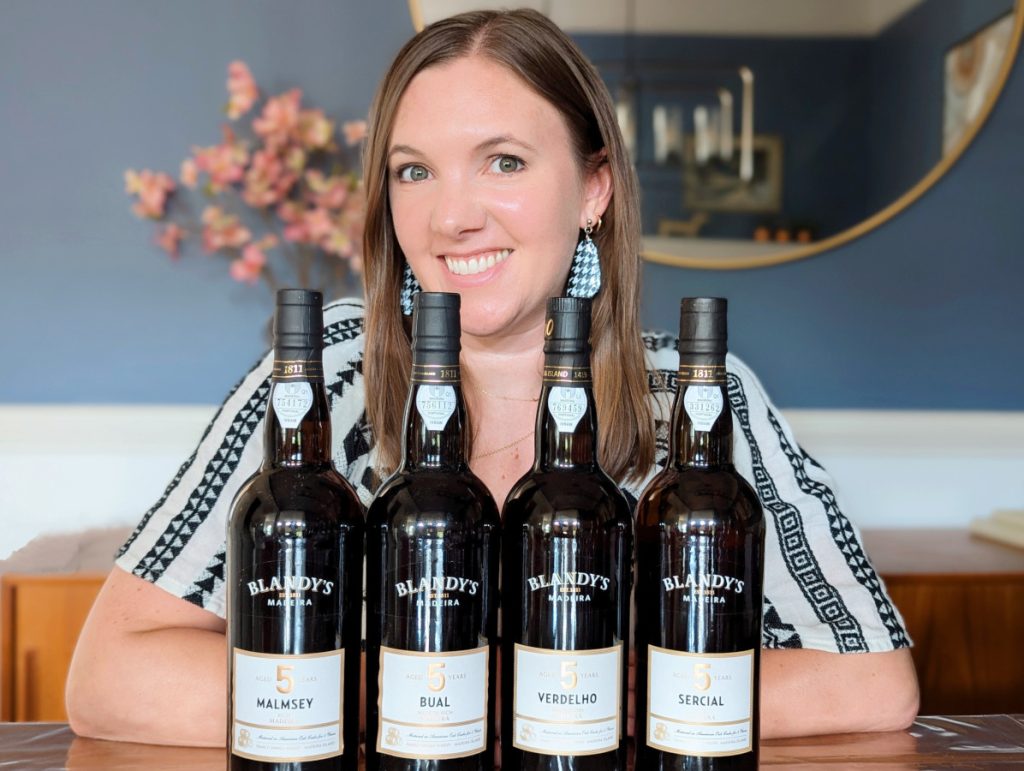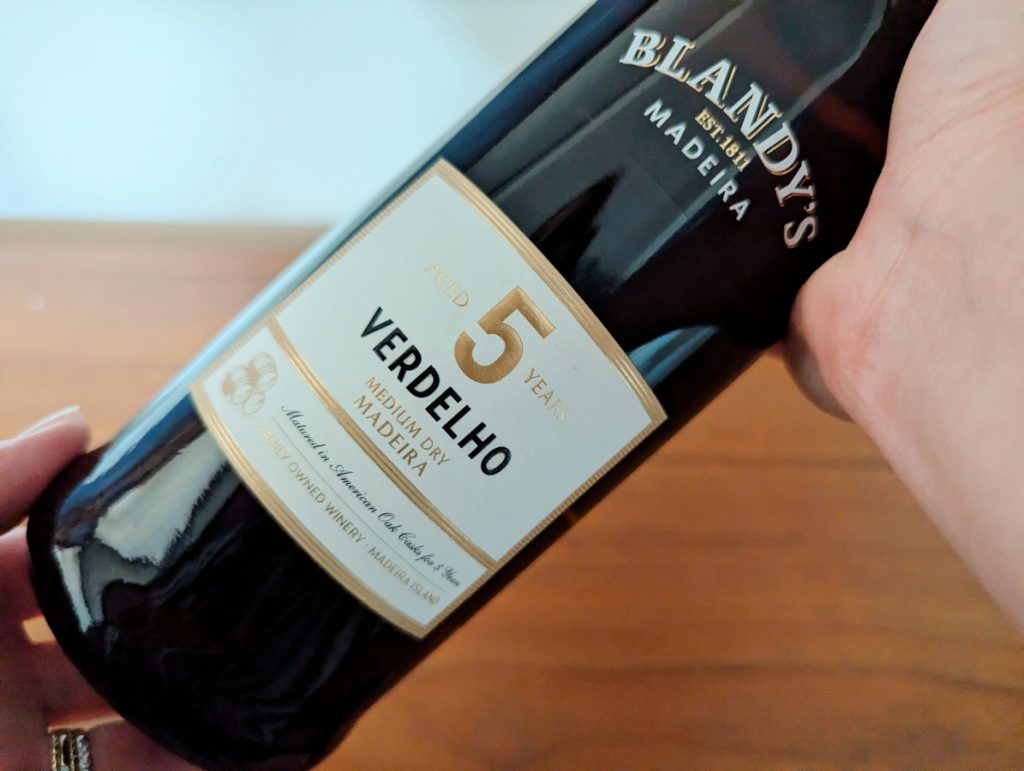
Photo by: Denise M. Gardner
In July and August, the city of Philadelphia is usually smothered in a hot, humid heat. With a frequent breeze, the humidity is bearable. But when the air is stale and still, the mid-summer’s days can be suffocating.
This is how I imagine the day during the signing of the Declaration of Independence in the beginning of August 1776.
Hot.
Humid.
Suffocating.
While the delegates had declared their independence on July 4th, it wasn’t until August that an enlarged parchment copy of the Declaration was presented to Congress for signatures (National Archives). I imagine a series of 50-ish men, dressed in their cotton dress shirts and wool overcoats, in a hot, stuffy room of the Pennsylvania State House in Philadelphia ready to officially declare freedom from British rule with their signatures.
But these colonists were not free from British traditions and customs in entirety.
In fact, many of them fancied a British favored alcohol of that time: Madeira. And surprisingly, it is rumored that the official signing of the Declaration of Independence was toasted with a round of Madeira. Can you imagine? The suffocating heat of Philadelphia, in an enclosed courthouse in Philadelphia, and someone starts passing around room temperature Madeira.
Did they pre-chill it? I don’t know. But the thought of this celebratory drink is always in the back of my mind during the month of July.
Of all the wines available… why Madeira?

Photo by: Denise M. Gardner
Madeira in the U.S.
The Oxford Companion of Wine, edited by British wine critic, Jancis Robinson, states that Madeira is “probably the world’s most resilient and longest living wine” (Robinson, Ed. 2006).
Madeira (muh-dee-ruh), the wine, is grown and produced on Madeira, the Portuguese island that rests in the Atlantic Ocean offshore from Portugal mainland. During the 1700’s, the British dominated the Portuguese wine trade across the Atlantic (Mutch 2016). Portuguese wines became a British staple in the late 1600’s to oppose the purchase and consumption of French wines (Phillips 2000). Geographically, Madeira was a natural stop between British trade routes from Britain to the U.S. via sea (Mutch 2016). Thus, ships could easily stock up with Madeira wine on the Madeira island before continuing towards the American coast.
Madeira is a high alcohol (17-22%), sweet wine that has been produced on the island since the 1500’s (Robinson, Ed. 2006). Madeira wines are “fortified” meaning that the alcohol concentration is higher due to the addition of grape brandy during production. There are several forms of Madeira wine with various names based on the wine grape varieties that make up the wines. The four “noble grape varieties,” which produce the best Madeira wines, are individually used to produce a unique style of Madeira wine. While every Madeira wine is sweet (just like Port), the extent of sweetness varies based on the wine grape variety. In order from least sweet to most sweet, these four varieties are: Sercial, Verdelho, Bual (or Boal), and Malvasia (or Malmsey).
Madeira wines are unique in their flavor, range in sweet caramel, nutty, candied citrus, dried fruit, and warm spice flavors, which is, again, based on the wine grape variety used to make the wine. During the 1700’s, these flavors were developed when the wine was stored within large casks in the hulls of ships as they crossed the Atlantic Ocean. During the sea travel across tropical portions of the ocean, the wine transformed into this well-known taste of Madeira wine. Today, however, sea travel is no longer used to create the characteristic flavors of Madeira. Instead, most of Madeira is now put into large, heated rooms or tanks called ‘estufas,’ which provide the characteristic flavors that differentiate Madeira wines from other Portuguese fortified wines.
The Americans of the 1700’s loved these wines, and they were keen on knowing the higher quality Madeira wines from the lower quality wines. Higher end wines, produced from the noble grape varieties, were often used for celebratory affairs and amongst the elite within the colonies. This is often recorded in diaries and archives associated with American’s Founding Fathers.
In fact, many colonies focused on finding a wine grape in the new land to make their own version of – or replace – Madeira (Pinney 2007). This endeavor never quite came to fruition as the American eastern seaboard was notorious for killing wine grape vines before they became fruitful for winemaking purposes. The climate across the Americas was brutal: humid, which supported fungal diseases like Black Rot, Powdery Mildew, Downy Mildew, and Botrytis. Each of these fungal diseases, alone, could destroy vineyards. Additionally, various pests including Grape Berry Moth and Phylloxera hunted vines and grape fruit. Eventually, native (American) wine grape varieties would get used for cultivation and winemaking purposes. But these varieties never replaced the beloved wines culturally accepted by various colonists that established the U.S.
Needless to say, with the failures of establishing an American winemaking industry, Madeira remained a popular commodity among the new American colonies.
The tipping point for American independence can be linked to the British government’s taxation rules on the colonies. The Sugar Act of 1764 contributed to the taxation on foreign goods coming into the colonies (Triber, National Park Service), which included their beloved Madeira. With the passing and stricter implementation of the Sugar Act on colonists (Triber, National Park Service), many sought new wine grapes to grow for wine production. While this had been an ongoing endeavor for colonists, the Sugar Act provided a new incentive to focus more on American grown grapes (Pinney, 2007).
With all of these things considered – the love for Madeira, its consumption amongst the elite of the time, the best quality Madeira used to celebrate special occasions, and a general unrest for its taxation – the rumor that Madeira wine was used to toast the Declaration of Independence does not seem unfathomable. In fact, it almost seems, well… American.
The Downfall of Madeira in the U.S.
Despite the separation from British rule, Americans remained faithful to their love for Madeira wine. Records from Mount Vernon (Thompson, Madeira) show that America’s first President, George Washington, routinely ordered pipes (126 gallons) of Madeira wine for his Mount Vernon estate, for example.
How does a wine so beloved by our founders turn into a wine that so few Americans consume today? Over the pan of about 250 years, the drop in Madeira wine consumption is somewhat spectacular, attributing its demise to a long history of unfortunate events.
The grapevine fungal diseases common in America eventually reached the island of Madeira during the height of trading. The fungal diseases, which grape growers on the island had not experienced before, completely decimated vineyards. This event was so devastating that it was thought that all of the noble grape varieties could be lost. Many farmers switched to alternative crops. While grapevine growth and wine production were eventually restored decades later, the American market changed.
It’s important to note that many urban districts in U.S., especially those that were seaports, saw the rise and fall of many wine trends over time. For example, during the Gilded Era (1875 – 1900), Champagne was in popular demand, especially within elite society. Other high society favorites of that time were from the Bordeaux Chateaus in France. However, domestic wines during the early decades of the 20th century, were not sought over by many Americans. During the Gilded Era and into the mid-1900’s, domestic wines did not have the reputation that many have today.
But fortified wines, including Madeira, still had their place during the 1800’s and early 1900’s amongst Americans. Often, Madeira was used as an apéritif prior to a meal or digestif following the meal.
It wasn’t until after the end of Prohibition that Madeira wine was somewhat forgotten amongst Americans. Prohibition (1920 – 1933) would change the face of American wine consumption in many ways, and the loss of Madeira’s popularity was just one of many casualties. For example, winemaking culture in many states across the U.S. was completely wiped out as family-owned winery operations were not able to stay in business. The wine importing trade changed (obviously) since the sale of alcohol was illegal during Prohibition. And, finally, consumption patterns changed as the rise of home winemaking and the cocktail culture would change America’s relationship with wine forever.
When the U.S. wine industry did re-emerge after Prohibition, it did a complete shift from making low quality dodgy wines to making table wines with delicate, desirable flavors and often associated with the wine grape variety that the wine was produced from. With technological improvements, wines could taste differently than what was produced decades prior. One big change in wine style was a shift from high alcohol fortified (with brandy) wines to lower alcohol table wines. Thus, with a lighter supply of fortified wines, a change in consumption patterns emerged post-Prohibition.
Americans’ love for Madeira, and the wine industry as we know it, was forever changed.
Madeira Today
There’s no way around it: Madeira wines are simply delicious. It’s easy to see how desirable these wines could have been to the colonists. There’s no other wine that I know of that comes close to the taste profile of Madeira wines. Due to their sweetness, many Madeira wines are found in the “dessert sections” of wine stores today. If you love sweet wines, Ports, or Cream Sherries, then Madeira is perfect for you to try!
For me, Madeira wine is a reminder of what once was. To taste a glass of Madeira today provides a snapshot of cuisine and culinary preference from the onset of the United States. There are not too many things that we can consume today that are similar to what was consumed 250ish years ago. It’s also a reminder of how much has changed since its introduction to the American market. Today, most people would be able to afford a bottle of Madeira. The generation of per capita wealth in America, obviously, has changed since the 1700’s when only the wealthiest Americans could afford such a drink.
Is it trendy? No.
No, I don’t think you’ll find a lot about Madeira wine on Tik Tok or X.
But is it thought-provoking and delicious? Yes.
Is it historical? Also, yes.
Is it worth trying? Definitely, yes.
If you want a snapshot of what these wines taste like, tune into the August 2024 Sip & Swirl in which I’ll review a series of 5-year-old Madeira wines, a 10-year-old Verdelho Madeira wine, and Rainwater. Plus, I’ll break down these styles for you a bit more so that you know exactly what to try the next time you find Madeira wine in the wine store!
This Post was Written and Supported by the Following Resources:
Madeira Wine and American History. Available at: http://www.discoveringmadeira.com/the-history-of-madeira-wine-made-in-america
Mutch, A. 2016. Europe, the British Empire and the Madeira Trade: Catholicism, Commerce and the Gordon of Letter Fourie Network C. 1730 – C. 1800. Northern Scotland 7, 21 – 42.
National Archives. https://www.archives.gov/milestone-documents/declaration-of-independence
Phillips, R. 2000. A Short History of Wine. ISBN: 978-0060937379.
Robinson, J., Ed. 2006. The Oxford Companion to Wine, 3rd ed. The Oxford University Press. ISBN: 9780198609902.
Thompson, M.V. “George Washington’s Mount Vernon: Madeira.” Available at: https://www.mountvernon.org/library/digitalhistory/digital-encyclopedia/article/madeira/
Triber, J.E. National Park Service. “Britain Begins Taxing the Colonies: The Sugar and Stamp Acts.” Available at: https://www.nps.gov/articles/000/sugar-and-stamp-acts.htm#:~:text=Enacted%20on%20April%205%2C%201764,importation%20of%20all%20foreign%20rum

